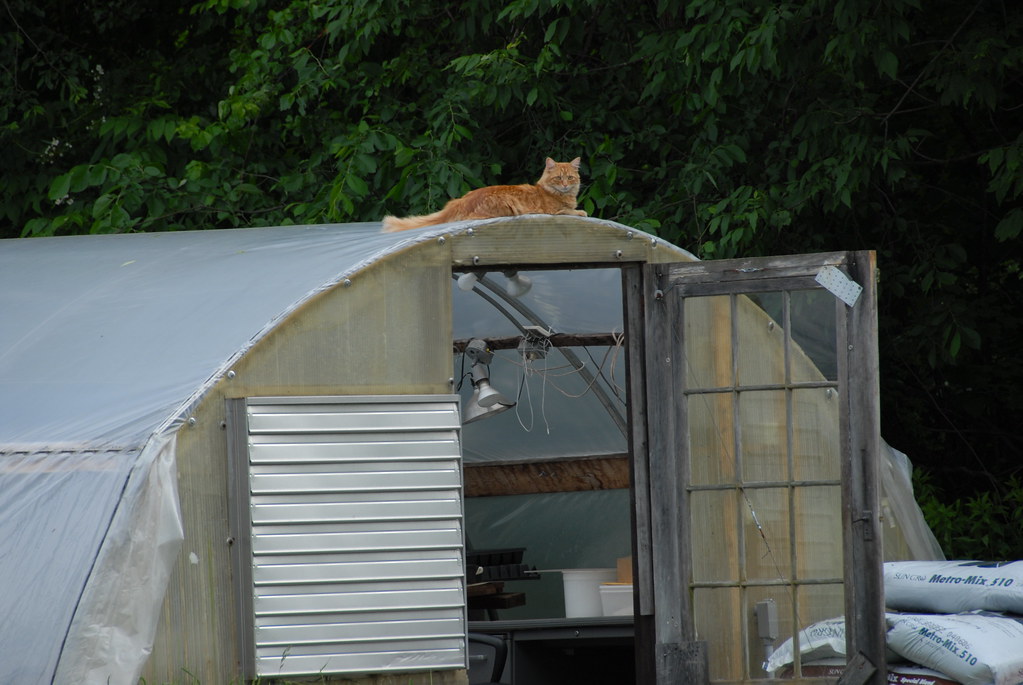Animals in Produce Production Areas
Tips for Managing Animals and Pests in Enclosed and Partially Enclosed Production Areas
, Produce Safety Technician

What is the risk?
Animals pose a risk to produce safety when entering production areas because they have the ability to carry and spread human pathogens. Animals and pests have the ability to contaminate produce and produce contact surfaces through depositing excrement as well as through tracking feces and soil into production areas.
What is an enclosed or partially enclosed production area that may be found on a produce farm?
Enclosed and partially enclosed production areas include greenhouses, high tunnels, hoop houses, packing houses, product storage areas, etc.
What are common animals to manage in enclosed and partially enclosed production areas?
Common animals to manage include domestic cats and dogs, birds, rabbits, groundhogs, and rodents.
What are some management options?
It is always best to keep domestic animals out and deter pests from entering enclosed and partially enclosed production areas.
Domestic Dogs and Cats: Animals such as domestic dogs and cats should be deterred from entering buildings and structures by shooing and closing doors and access points whenever possible. Trainable animals such as dogs should be provided with consistent reminders of areas they cannot enter. Other means of keeping domestic pets out include animal control collars and/or shock/vibration collars.
Birds: Birds can be hard to control. Options for deterring birds from entering enclosed and partially enclosed production areas include hanging reflective strips at the entrance of the building to scare birds from entering the building. Multiple lines of fishing line stretched across the highest part of the doorway can deter birds from entering. Flying into the fishing line will not injure birds but can startle them when attempting to fly into the building. Dummy birds of prey such as owls can be placed in or hung from rafters to scare smaller birds away. Another great way to keep birds out of buildings is to cover any exposed rafters so that birds don’t have a place to roost or perch. Rafters can be covered with several materials including barn steel and even netting. Netting can also be placed in window seals so that windows can be opened without allowing birds to fly in.
Rabbits and Groundhogs: Blood meal products like Plantskydd dispensed around enclosed and partially enclosed buildings can help to deter rabbits and ground hogs. These products give off an unpleasant smell to wildlife, which deters them from the area. Physical barriers like chicken wire on the sides of high tunnels can prevent rabbits and groundhogs from entering the tunnel while still allowing air movement and ventilation. Unbaited live traps can be a means of monitoring for, and catching, groundhogs. To keep rabbits and groundhogs from establishing habitat in and around enclosed and partially enclosed production areas grass should be kept mowed and wood should be piled away from buildings.
Rodents: Rodents can also be difficult to control. Having tight seals on buildings can help with keeping rodents from entering. Unbaited snap traps located at possible entry points can provide a means of monitoring for rodents. Traps should be unbaited so that rodents are not drawn into the building. Poison is not a good option for managing rodents. Poison can cause rodents to die in and around produce causing a contamination risk.
For help identifying management options specific to your farm contact your local produce safety technician. The technician covering your area can be found by following the link below.
https://www.miofps.org/contact



 Print
Print Email
Email